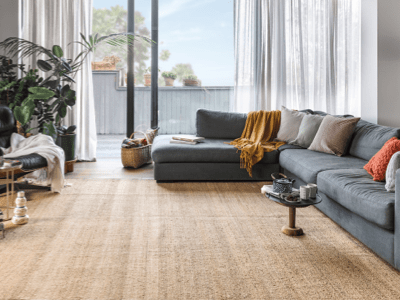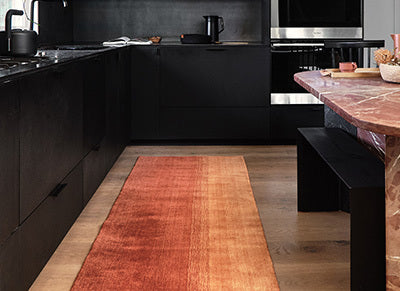Loved By














Bestselling Collections
New Arrivals & Featured Rugs
They don’t
make rugs like they used to.
We're bringing back great rugs, from vintage to new. Find out how.
We have rugs in all the right sizes and colors
Over 10,000 5-star reviews for our award-winning rugs

Prettier in person
“I'm a big fan of Revival and this one does not disappoint. The colors are gorgeous and the ombre is subtle but beautiful. Thick and silky soft. Another favorite.” -Holli R.

New favorite rug!!!
“I love how soft this rug is, right out of the packaging! It cleans well, and the color is a great neutral tone. It works with all of our other décor, but still makes a statement.”-Carrie W

Happy I purchased
“The green color and pattern are beautiful. This somehow has the softness of a really high pile rug. Doesn’t trip anyone, easy to clean and feels luxuriously soft.” - Kerry A.

Absolutely obsessed
“This is the smoothest jute rug I’ve ever owned, and this pattern… oh my goodness! This rug completely transformed the look of my living room and I am obsessed!” -Patti R.
Not sure where to start?
We’re here to help.
Take Our Rug Quiz
We’ll guide you to the right rug with a couple of questions

See It In Your Room
Upload photos to view rugs in your space

Free Design Services
Get a free consultation with one of our in-house professionals
EVERYTHING YOU NEED TO KNOW ABOUT RUGS
The right rug has the power to not only transform a room but also enhance your overall experience in that space. A comfortable rug underfoot invites you to spend more time in the room. It’s the same reason you want to find any decor or art that works with your space – you feel good every time you look at it.
Rug Materials
When it comes to rugs, a wide array of high-quality materials is available, each with its unique characteristics. Understanding what you're investing in is key. We’re not purists about it; we’re pretty democratic. There aren’t really “best rugs”, but there is definitely the best rug for you! We focus on crafting rugs made from durable, comfortable, and beautiful materials that are environmentally friendly.
Our most commonly used material is wool, a staple in Turkish and Moroccan rug design. Wool is a wonder-fiber; it's anti-bacterial and protected by its natural lanolin. It’s plentiful in supply, durable, long-lasting, and soft—so it’s super comfy to walk and relax on. There’s a reason it’s been used for centuries in rug production and is still used today.
We also sell a lot of rugs made with jute, another natural fiber known for its tensile strength and versatility. Jute is a flexible material; and when finely-woven enough it can look both elegant and casual. Jute rugs are soft enough in a bedroom but tough enough to withstand a playroom. This eco-conscious crop boasts minimal water requirements and acts as a carbon dioxide-neutral resource. Many of our rugs incorporate cotton and hemp, and our outdoor rugs are made of a fiber that consists of recycled plastic bottles.
Rug Techniques
Understanding weaving techniques is crucial for achieving the desired texture and pile height. The most common weaving techniques are hand-knotting, flatweaving, hand-tufting, hand-looming, and power-looming. Hand-knotting and flatweaving are the oldest styles of weaving.
In high-traffic areas, prioritize durability by opting for hand-knotted or flatweave constructions, which are built to last. Hand-knotted rugs are sturdy pile rugs woven by hand, and their knots are individually tied onto the rug’s foundation—meticulously crafted, no two hand-knotted rugs are exactly alike. Flatweave rugs, also known as kilims, are reversible rugs without pile, and are made by hand-weaving horizontal weft yarns through vertical warp yarns.. Hand-tufted rugs are pile rugs woven by pulling or shooting loops of yarn through a backing material, which are trimmed for a smooth cut-pile finish. Hand-loomed rugs are created on a loom, with an innovative technique that lifts the warp yarn to create a looped or cut pile. Machine-woven rugs are produced on powerlooms, offering a faster and therefore more affordable option.
Rug Sizes
The rules of rug sizing are malleable; they vary based on the space and the furniture. Ultimately you want something that complements the dimensions it’s living within. How big of a rug you need will depend first on the size of the room, second on the purpose of the room, and third on the furniture within it.
Choose the right rug size by measuring & drawing. Measure your room, measure the rug, make a little sketch to understand where things will fit. Use a rug size chart, or consult with an expert - we offer a free design consultation for just this scenario. If you’re interested in a custom sized rug, we can help with that, too. Please also refer to our rug size guide for additional resources.
Rug Patterns:
Pattern-wise - you can’t really go wrong with our timeless geometric rugs or our stripe and color-block rugs. Traditional Turkish rugs and Moroccan rugs effortlessly complement room aesthetics, seamlessly integrating with existing decor. Neutral rugs provide versatility, adding subtlety and tone-on-tone patterns.
Rug Placement
There’s no hard and fast rule for rug placement, and it changes depending on which designer you speak to – they all have their preferences, and it can all look good. But generally, if you’re looking for area rugs you want to place your rug in the middle of the room, leaving 1-2 feet between the rug and the wall (we aim for 1.5) so it can breathe, and you want the majority of your furniture to fit on it, at least partially—i.e., the front legs of a chair are on it. While there are no strict rules, placing an area rug in the center of a room with a 1.5-foot gap from the walls provides a balanced look. Opt for multiple rugs to layer or divide larger spaces, creating distinct functional zones.
We adore rooms with multiple rugs, whether layered for a cozy feel, like a vintage kilim over a flatwoven jute, or with mismatched runners on either side of your bed. In larger spaces, use smaller rugs to create distinct sections—a seating area, a reading nook, or a dining space near the window. Optimize your space with stylish rug arrangements.
Your home is a living, breathing entity – it’s an environment that grows with you and your family over time. We like to think of our rugs as buildable. So maybe you buy a jute rug, and you love it, but a year later you inherit your mom’s couch because she’s getting a new couch, and it changes the room, so you find a vintage rug that’s a little smaller than the jute and can lay it on top.
Rug Shapes
Rugs are primarily crafted in rectilinear shapes, either squares of rectangles. You’ll notice, a lot of Moroccan rugs are often longer and thinner than the typical American room; this is because they are crafted on narrower looms which facilitate that shape. That’s also why circular rugs are harder to come by, as the technique and tools used to weave rugs aren’t as well-suited to circular shapes.
Rug Ages
Both antique rugs (over 100 years old) and vintage rugs (at least 20 years old) can be expensive, and should be on some level, because of all the resources which go into creating them: the people who weave them and who grow and harvest the raw material.
Affordable, Well-Made Rugs
Good rugs shouldn’t cost a fortune, though. At Revival, we make and curate reasonably-priced, high-quality affordable rugs by cutting out unnecessary markups. The best place to buy rugs is from someone whose rug selection and values you like, and at Revival you’re getting something special, well-priced, and delivered straight to your door, whether it’s designed by our expert team, or sourced from our partners in Turkey, Morocco, and India. Learn more about our rugs and process here.
Our Favorite Rugs
We have a lot of favorite rugs here at Revival, but there are some types of rugs we come back to again and again. Jute rugs, for instance, for their color, texture, and strength, and their easy flexibility. Plus, jute is an eco-conscious crop, so these rugs are good for the planet. We also love washable rugs, designed to be thrown in the washing machine. Runners are probably our most favorite size of rugs: thanks to their slimmer size, you can put them everywhere—and they’re more affordable, too.
As seen in…
Be the first.
Sign up for early access to our newest collections and receive $40 off your first order over $250.








































































